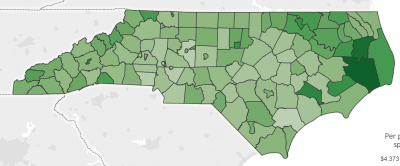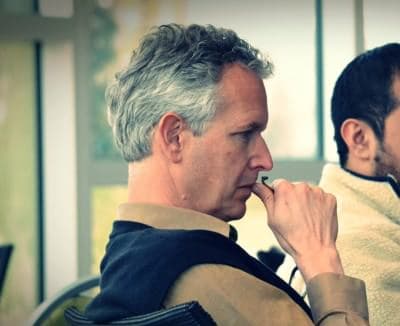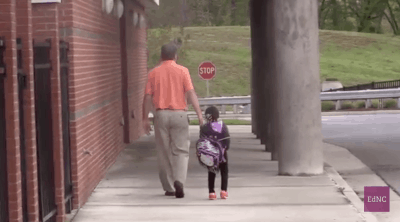This essay was originally published in Inside Higher Ed on May 8, 2015.
What did I do wrong? Did I do something offensive or upsetting? How do I fix this? What do I do? Where can I hide?
These are the kinds of anxious thoughts racing through my mind whenever a student walks up to me after the end of a class session. Such thoughts are not pleasant, functional or rational. They result from my mood disorder, characterized by high anxiety. If unchecked, the anxious thoughts are profoundly debilitating. They really impair my ability to interact with students well and undermine my ability to connect and engage with them.
This mood disorder also results in occasional flare-ups of fatigue symptoms. Here is how it looks in the classroom.
Imagine yourself as the teacher standing in the middle of a class, orchestrating a flowing and rich discussion. You are at the top of your game, the students are deeply engrossed in the topic and everything is going great.
Suddenly, you feel a wave of weakness spreading from your head into your chest and thighs. You need to sit down. You tell the students to keep talking while you find a seat. They are looking at you, confused by what is going on, the topic forgotten. You try to revive the discussion while managing your fatigue symptoms. You find it hard to raise your hand and point to students to call on them to talk. You are even struggling to speak yourself. Believe me, it is not fun.
The mental health condition I experience, an adjustment disorder, is relatively minor, compared to some others out there. However, it was very disturbing to me when I first discovered the condition in fall 2014.
Let me share my background for some context. I was always passionate about teaching others how to think more critically and rationally, and this helped motivate me to pursue my career as a history professor. I research emotions, decision making, meaning and purpose, fun and leisure, and civic engagement in historical contexts, focusing on the Soviet Union.
I am fortunate to be a historian, as I can draw on a multitude of diverse disciplines to inform my scholarship, and I also focus on psychology and cognitive neuroscience. Engaging with these fields brought me into contact with the modern rationality movement, dedicated to adapting academic research in these disciplines to optimize patterns of thinking, feeling and behavior.
I learned much and improved myself from these activities, and so did my wife, Agnes Vishnevkin, an experienced nonprofit professional. Based on our mutual passion to share this knowledge broadly, we decided in the spring of 2014 to co-found a nonprofit, Intentional Insights, dedicated to popularizing research-based strategies for improving our thinking, feeling and behavior patterns.
Unfortunately, Agnes experienced a nervous breakdown in July 2014. At first, we did not realize its severity. We collaborated together to apply many of the research-based methods promoted by Intentional Insights to her mental health condition, and when she visited a therapist three weeks after her nervous breakdown, the therapist recommended keeping 90 percent of what we’d developed together for Agnes going, because it worked really well for her needs.
I found myself in a tough situation in the fall 2014 semester. I spent a great deal of attention and efforts to help Agnes along her way to improvement. I lost count of the many nights we stayed up until 5 a.m., talking through the issues she was experiencing, or with me simply holding her as she sobbed in my arms. I helped her with many daily life activities, such as getting food when she was too weak to walk. I took over the vast majority of our household activities, areas that she had managed previously. I knew I was doing the right thing for my wife and for our family, but this was an incredibly draining experience for me.
I take great pride in my teaching and responsibility for the experience of my students, always striving to balance teaching them in a way concordant with the latest research in educational psychology while also helping them have a positive and satisfying experience conducive to their well-being. While maintaining my focus on teaching, I dropped some intended scholarly projects and some minor service commitments. I also took over the day-to-day operations of Intentional Insights, which Agnes had previously managed.
By late October, my own mental health condition began to emerge. I began to experience the anxious thoughts and emotions described at the beginning in interactions with students, whether face-to-face or by email. Giving students negative evaluations and grades exacerbated my anxiety. By mid-November, I also suffered fatigue symptoms.
Fortunately, my knowledge of psychology and cognitive neuroscience, rationality strategies, and the content from Intentional Insights helped me develop research-informed coping strategies for these everyday teaching situations. I worked to develop the capacity to notice anxious thought patterns and challenge them. I asked myself whether the anxious thought pattern made rational sense and what kind of evidence I had to justify that thought pattern.
I asked myself what was the worst-case scenario with any student interaction, and what was the probability of the worst scenario occurring. I applied mindfulness meditation strategies, spending some time meditating before each class to deal with anxiety. I learned to notice my sensory experiences and catch waves of fatigue before their full-scale onset, taking a seat well in advance of the wave and shifting students to group activities instead of class discussions, thus preventing the wave from impeding my class activities.
As testimony to the effectiveness of these in-the-moment coping skills, I received higher teaching evaluations from students in fall 2014, when I was struggling to cope with my own mental health issues while taking care of my wife, than I had the previous spring. These coping skills proved a great solution for everyday challenges in the classroom or in email engagement with students, but did not address the underlying causes of the situation, or prevent the exacerbation of my own mental health challenges. As the semester concluded, I found myself close to burnout, tired to the bone.
Two particularly thoughtful and sensitive senior history colleagues, my mentors on the Newark, Ohio, campus, noticed my experiences and encouraged me to take a medical leave. After assessing my situation during the December break between semesters, I decided that I did need a medical leave to take care of my own mental health, including seeing a therapist, while also taking care of my wife’s needs.
Knowing the stigma against mental illness in the halls of academia — including at OSU as experienced by a colleague in the History Department — I had a great deal of anxiety about applying for a leave. Thus, ironically, my anxiety made it hard for me to send the email requesting the leave to deal with my anxiety.
Nonetheless, my desire to preserve my own mental health and prevent a nervous breakdown for myself pushed me to apply for the leave. This was not an easy process at all, as a leave for mental health is very unusual, and received much scrutiny and questioning by the administration. I was very uncomfortable with the consequent detailed knowledge of my medical condition by senior administrators on the OSU Newark campus, and others not in the HR department. I experienced pressure to keep teaching classes and heard implicit criticism about taking a leave for mental health reasons, instead of a “real” illness, with statements such as “we have faculty here who want to teach from their hospital beds.”
Still, I finally managed to get an unpaid medical leave for the spring 2015 semester. I used this time to visit a therapist weekly and spent several hours daily outside the sessions on improving my own mental health. The knowledge I already had helped accelerate this process. I continue to see a therapist weekly, and I am happy I chose this path to help me improve my mental health.
In this essay, I am coming out of the mental health closet, especially regarding teaching. I hope that my doing so will be a small blow toward combating the pervasive stigma around mental health in the halls of our educational institutions and our society more broadly. Research indicates that the best way to combat stigma against mental health and other nonvisible markers of nonconformity is to come out of the closet. Many of my OSU colleagues do not know about my condition, although my supervisors and some senior colleagues do. I will look forward to learning the responses of my colleagues as I share this article with them, and may write again about their reactions.
I hope writing this article can help other educators, whether in four-year colleges and universities, community colleges or schools, who suffer from mental health challenges. I want to convey to them that they are empowered to learn effective strategies for managing their conditions in educational contexts, including getting professional help, engaging with the rationality movement and serving as advocates for themselves within their institutions.
In being an advocate for yourself, remember that mental health is a condition covered by the Americans With Disabilities Act. Likewise, I hope that sharing my story will help educators who do not suffer from mental health conditions be more understanding and sympathetic to their colleagues who do. I also aim to encourage supervisors of educators to be more thoughtful and considerate in their supervision, whether of educators with existing conditions or those who develop a new condition, as I did.
Regardless of your own mental health condition or the lack thereof, please consider sharing this article with your colleagues and supervisors if you wish to advance these goals.





